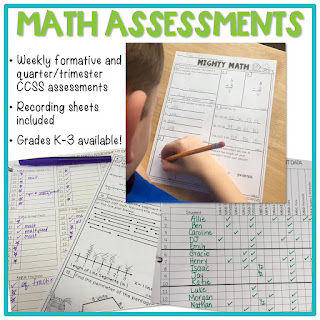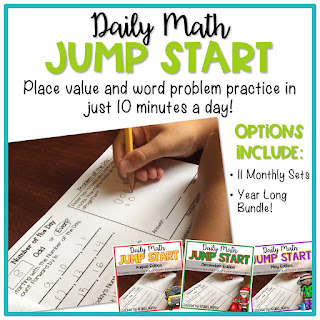Reader's Theatre: not just for beginning readers!
I just love using reader's theatre in my classroom! Reader's theatre is defined as a group of readers who "perform" a grade-level text for an audience, usually without scenery, props, costumes, and most importantly, without the stress and pressure of students memorizing their lines.
Here are 6 reasons why you should be using reader's theatre in your classroom too!
1. Increases Reading Fluency
Research shows that students who read with fluency have better comprehension of the texts they read. Reader's theatre scripts help increase oral reading fluency as students need to practice their parts numerous times before they perform them to their audience.2. Encourages Reluctant Readers
You will find that reader's theatre is a great motivation for your lowest readers. Mine tend to choose to take on major roles (narrator, main characters) and have truly risen to the occasion. Seeing their faces when they perform in front of their peers and their grown ups makes my teacher heart soar! I've even had a few parents come up to me after the performance, thanking me for helping to build their child's confidence.3. Encourages Fluent Readers
Fluent readers benefit too, as they can focus on the expression in their dialogue and are able to dig deeper when exploring the genre and their characters.4. Allows Students to Perform and Practice Public Speaking Skills
Do you have any actors and actresses in your class? Or maybe you do, but they just haven't been discovered yet! Reader's theatre allows students to be dramatic and "ham it up" in front of their classmates and grown ups. We also used our performances as an opportunity for students to practice projecting their voices and not holding their scripts in front of their faces!5. Increases Student Focus and Engagement
In order for reader's theatre to be successful, all readers in the group need to be paying attention, ready to read when it's their turn. Nobody wants to be put on the spot when they aren't ready to say their lines.6. It's Easy and Fun!
OK, so I know that sounds like a weak reason, but really it's not. Who has time to create scenery, costumes and props for a play? I sure don't! Reader's theatre is super easy to implement. You'll also find your students are so excited to perform their script in front of their audience. It's so fun to watch your class take ownership and lead their groups through the performances.Now that we know why, let's talk about how.
I typically take about a week and a half for our reader's theatre unit. I like to use reader's theatre at the end of the school year (when teaching seems more like crowd control) due to reason number 5 above :) Here's a brief breakdown on how I implement it:
DAY 1
I first start by introducing the drama genre and the characteristics of the genre. I consulted a friend of mine, who is a theatre director at my local high school for a list of characteristics. I was also fortunate to have a student this year who performs in the plays at the local chidren's playhouse, so I let her do most of the talking :)DAY 2
Then we talk about the difference between a play and reader's theatre. I introduced the four scripts we were going to use and gave a brief synopsis of each. Then I picked names at random for students to choose their parts.DAY 3
We discuss the importance of fluency and expression and using a loud, sharing voice (level 4 voice in my room). We also talk about making sure you're following along when it's not your turn to speak, so that you are ready when it IS your turn.DAYS 4-8ish
Then it's time to practice! I assigned each group a corner of the room. We practiced two times a day for 5 days. I also let them read their parts in the script during Read to Self. Gauge your class to see if you need more or fewer days to practice.A few days before the performance, we sent out invitations. We invited our families to come in to see us perform.
Click HERE if you want a freebie copy of the invite
PERFORMANCE DAY!
On the day of the performance, we decided on the order in which the plays would be performed. I just picked student names at random, and if I picked a group member's name, then that whole group would go. I set up the chairs at the front of my classroom. Students picked a chair ahead of time, so that there wouldn't be any confusion or two kids going for the same chair. Before our families came, I pushed all the desks to the back of my classroom and pulled as many chairs as I could for the grown ups. Then my students sat on the floor in front of them.The trickiest part of implementing reader's theatre... finding reader's theatre scripts that are appropriate for your readers. I've found that most reader's theatre scripts are meant for beginning readers (K-1) who are working on fluency and expression. And the ones that are written at the 2nd-3rd grade reading levels are ridiculously long! I bought a 2-3 grade reader's theatre kit and each script was about 10-15 minutes to perform. Multiply that by the 4-5 groups I have.... #aintnobodygottimeforthat And not only that, but the scripts were super boring.
So last year I decided to write my own!
I love that these scripts take approximately 4-5 minutes to perform, are funny and engaging, and the storylines are relevant to what our students are experiencing and are interested in. You can see all my reader's theatre scripts in my TpT store HERE!
Do you use reader's theatre in your classroom? Tell me about your experiences in the comments below!


















No comments
Thanks for taking the time to leave a comment. I *love* reading comments!! Make sure you are a no reply blogger or leave your email address so we can stay in touch!